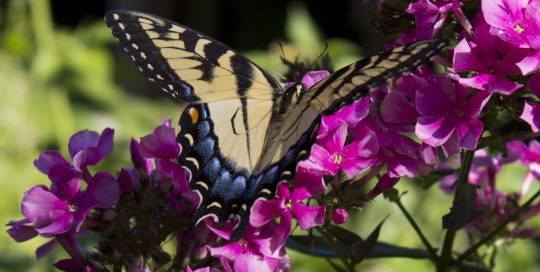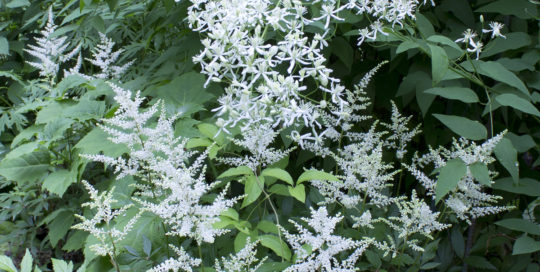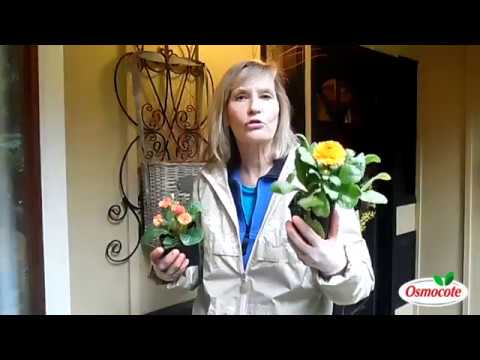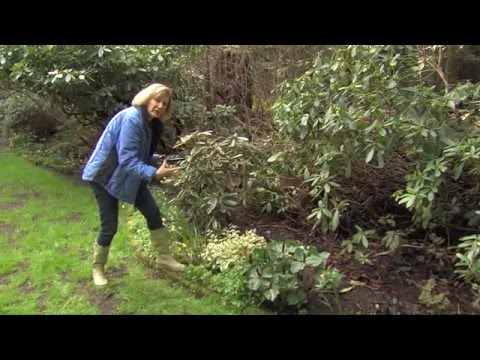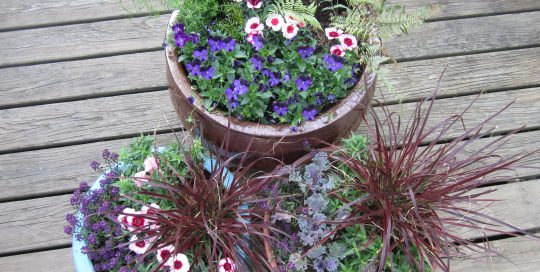Whatever happens in our gardens in the fourth month of the year depends quite a bit on the third month. In 2012, for example, March chalked up nine days in a row of daily highs above 77 degrees F before falling down into the 60s for the rest of the month. The sequence of spring-like temperatures urged plants to wake up, and March began to look like early May, with tulips, lilacs, and redbuds bursting into bloom well before April Fool’s Day.
In short, plants don’t take the calendar into consideration. We’re still hoping for the slightest hint of color, even if it’s green. We can’t wait to brush aside the dried leaves to see if those plants we tucked in last November are ready to wake up and get growing. We can feel the sun’s warmth even if the wind chills our bones.
Persnickety Perennials
Established plants take temperature fluctuations in stride, but newly purchased perennials are a different story. Even though the brand new collection of perennials we bring home from the garden center are labeled hardy, they should be “hardened off.” Hardening off is a term that refers to gradually acclimating a plant to its new environment. As tempting as it might be to plant our new acquisitions as soon as we get them home, it’s best to give them a few days of semi-pampering before making them live outside. The majority of garden center plants have been grown in a greenhouse where their moisture, light, temperature and humidity were controlled.
Keep plants in their pots and water them only if they’re dry. Put them under a shrub, an awning, or even an umbrella—they are not ready for the full force of the sun even if their tags say they like it. If temperatures are going to be cold overnight—below 50 degrees F—make sure the soil isn’t wet. Bring the plants close to the house for the night. Put them, pot and all, in a big cardboard box lined with newspaper or some other type of insulation.
While we wait for our new additions to acclimate, we can enjoy our April garden, especially if we already have the following dozen perennials, trees and shrubs.
Here’s a list of great plants to have in April:
Bishop’s hat (Epimedium)
Even though it’s mostly about the leaves for these elegant groundcovers, their flowers appear without a hitch, extended on wiry stems that seldom reach more than a foot. Epimedium are at their most colorful when they first arrive, with blotches and edges of a darker green or even burgundy on their mostly arrow-shaped leaves. Flowers are as delicate as fairy hats, or the mitered crown of a miniscule bishop.
Bleeding heart (Dicentra)
The fact that Dicentra (die-SENT-rah)* disappears when the weather heats up makes it even more delightful in a shady landscape. I especially like the variety called ‘Gold Heart’ for its vigorous nature and golden leaves that light up even the deepest shade. Other new hybrids like is called ‘Burning Hearts’, for its deep red flowers that contrast with leaves that are blueish and fern-like. *Name recently changed to Lamprocapnos spectabilis
Cornelian cherry (Cornus mas)
This lovely small tree is the first one to bloom, its bright yellow flowers emerging right on the branches. This European dogwood will bear fruit, but it’s about the same size as a crabapple. There is a variegated form that is virtually trouble free as long as it gets some shade during the day to keep its leaves from burning.
Eastern Redbud (Cercis canadensis)
It’s hard to miss a redbud in bloom, its tiny yet numerous magenta flowers running up and down the trees dark branches. This small understory tree can withstand some shade, is drought tolerant, and turns a bright yellow in fall.
Lenten roses (Helleborus)
Some of the easiest plants to grow in a partly-shady situation, Hellebores send their flower buds up in a tight cluster as soon as the weather warms up even for a short time. They stay in that holding pattern, usually until March or April when they open up in colors that range from solid to variegated, single to double petal hybrids.
Magnolia
Perennials aren’t the only ones putting on a show in April. A variety of Magnolias will come into bloom in April, including the breakthrough ‘Butterflies’, a yellow variety that rarely suffers late frost damage. Hybrids have come a long way and are available in a range of sizes and colors. If your garden is subject to unexpected late frosts, make sure to find a Magnolia variety that blooms later in the season.
Mukdenia
What Mukdenia lacks in size it more than makes up for in charm. A plant that rubs elbows happily with coral bells and other early arrivals, Mukdenia is a slow grower that sends up an adorable clusters of white flowers as its leaves are just getting started. It tops out at around 8” and has leather leaves that look great all summer long.
Navelwort (Omphalodes cappadocica)
One of the best plants for bright blue spring flowers, Omphalodes will reseed where it is happy. The variety called ‘Starry Eyes’ has bi-colored blue and white flowers on a plant that never exceeds six inches tall. Plant in shade.
Pigsqueak (Bergenia)
Its name comes from the sound it makes when you rub your thumb against the leather leaves of many varieties of this plant. Some have bristly leaves, however, so it’s best to learn its real name. A great groundcover for semi-shady spots, Bergenia, with its great, rounded leaves blooms in spring with clusters of pale pink flowers.
Primroses (Primula)
A well-known staple in English woodlands, primroses once were pretty scarce in the U.S. While grown extensively in Britain, many of the 450 or so species aren’t big on heat and humidity. Over the past few years, hybridizers have been combining species to create plants with more heat tolerance.
Quince (Chaenomeles speciosa)
Flowering quince is one of those shrubs that brighten up the landscape especially early in the spring. Newer varieties, like Proven Winners’ Double Take series, have more blooms than the older varieties, and they are thornless, a nice touch if you tend to cut branches for arrangements.
Viburnum
Dozens of common names are ascribed to this huge group of shrubs, from snowball bush to cranberry bush. Some have berries and fall color while others have fragrant white flowers. According to author Michael A. Dirr, a viburnum exists for virtually every garden. For a mind-boggling list, visit Classic Viburnums, a Nebraska nursery self-described as offering the largest selection in the U.S.

